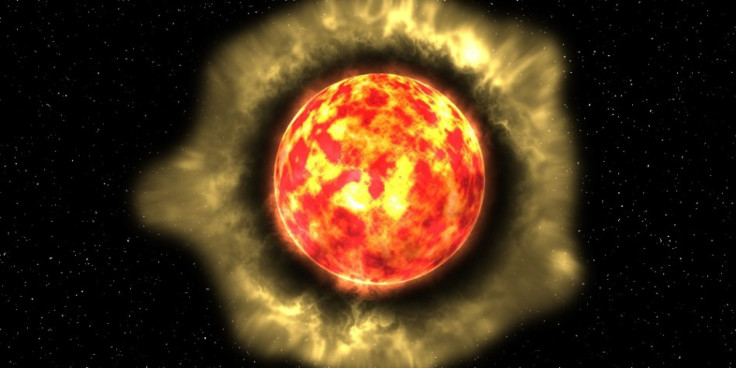Space Sandstorms Explained: What Happens When Stars Bite The Dust

Billions of years from now, a wind will begin to blow from our sun as it dies. This storm will blow for more than 10,000 years and carry as much as half of the sun's mass away with it, leaving a fainter, colder remnant of its former glory.
Astronomers have long known about these superwinds that herald the deaths of stars, but until now, have been at a loss to explain how they happen.
It was thought that the process was driven by the formation of silicate dust grains in the star's atmosphere that were pushed out by the radiation of the star's light. But previous models showed that the grains would have heated up and evaporated before they could be blown out into space.
Now, however, astronomers observing dying red giants hundreds of light-years away think they've figured out how the solar dust storms get going.
A team of astronomers in Australia, France and the United Kingdom pointed their telescopes at three stars: W Hydrae in the constellation Hydra, R Doradus in the southern hemisphere constellation Dorado, and R Leonis in the Leo constellation. They reported their observations in the journal Nature on Wednesday.
The scientists found dust grains in the stars' atmospheres that had reached the size of nearly a micrometer across -- which, at a thousandth of a millimeter, is quite small to human eyes, but much bigger than expected.
At that size, the dust grains are able to reflect the light of the star instead of absorbing it, meaning that they can be pushed out by the light, at speeds of about 20,000 miles per hour.
The dust and sand in the superwind will survive the star, and later become part of the clouds in space from which new stars form, Albert Zijlstra, a co-author of the paper from The University of Manchester's Jodrell Bank Observatory said in a statement.
The silicate grains borne on the superwind will form the building blocks of new planets in the same way that stardust formed Earth, according to Zijlstra.
We are now a big step further in understanding this cycle of life and death, Zijlstra said.
© Copyright IBTimes 2024. All rights reserved.




















